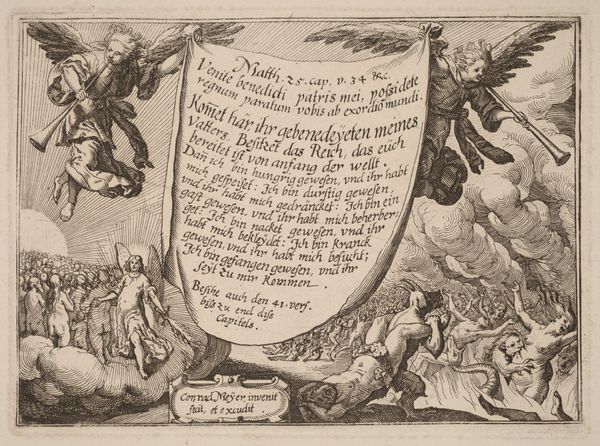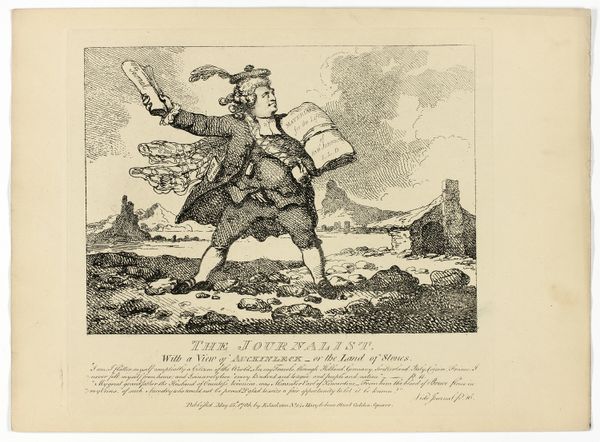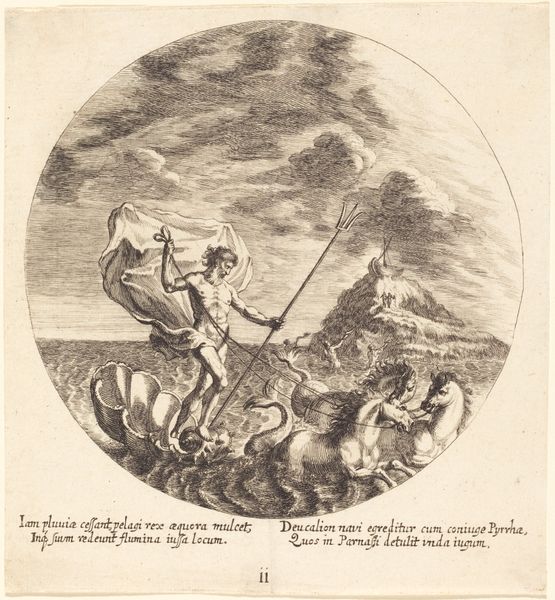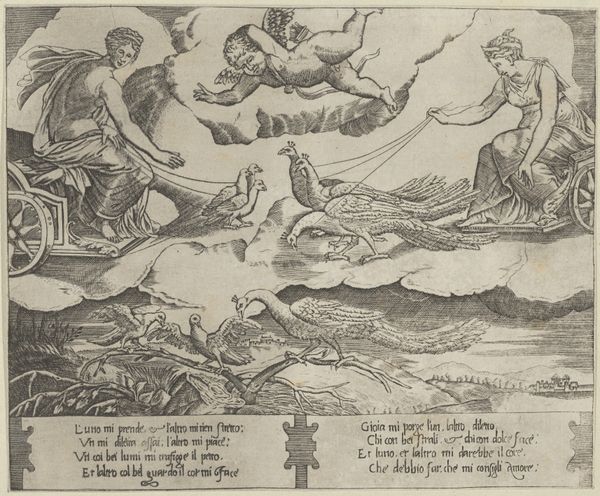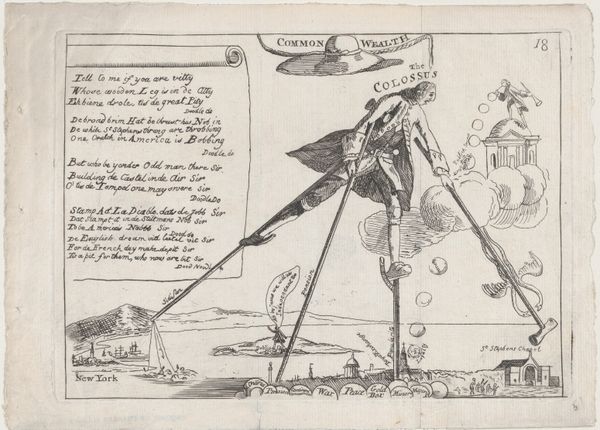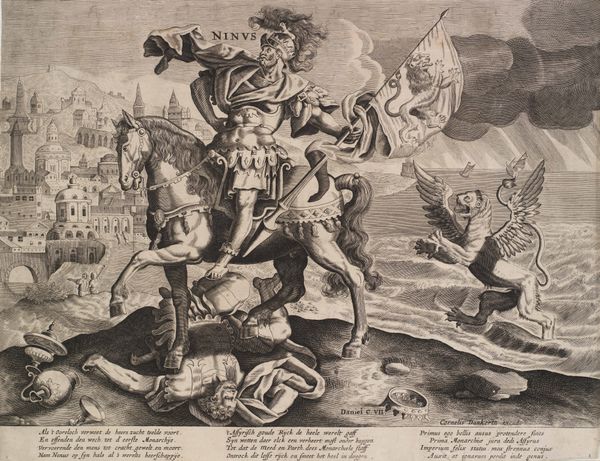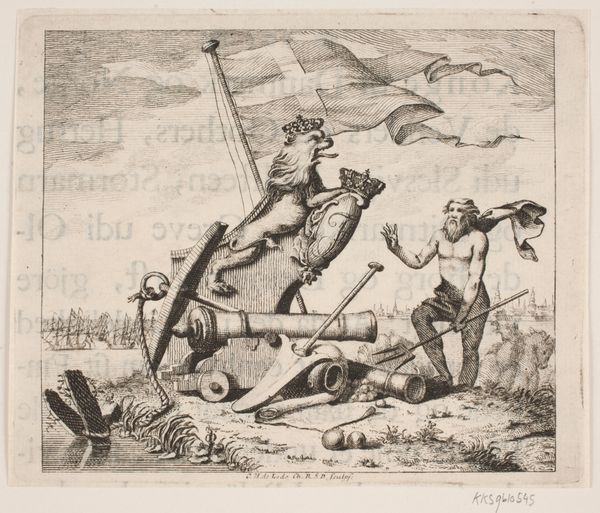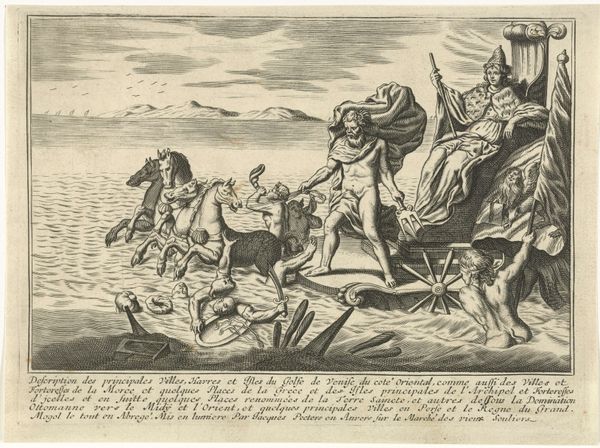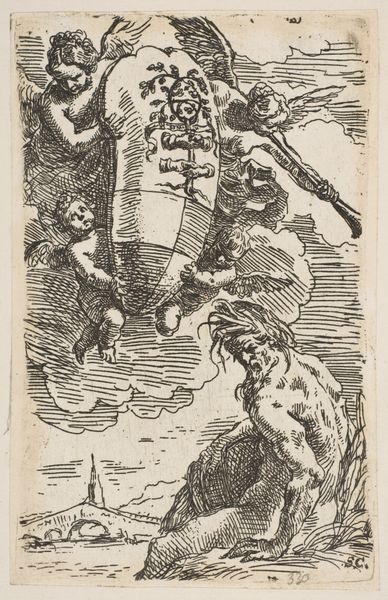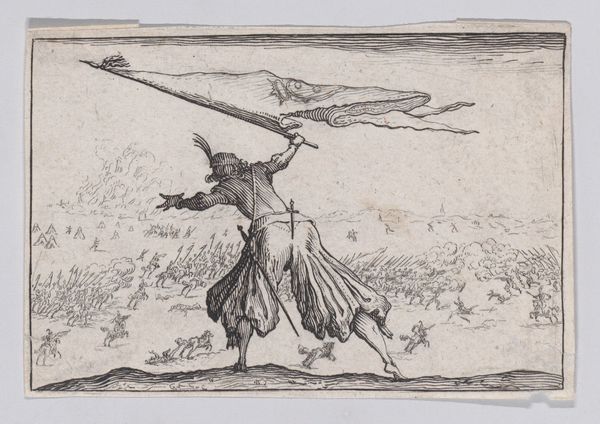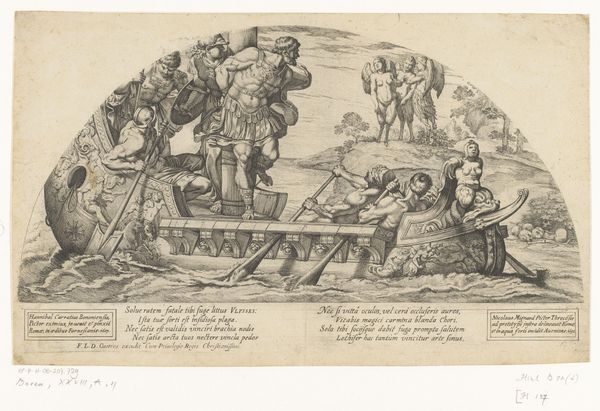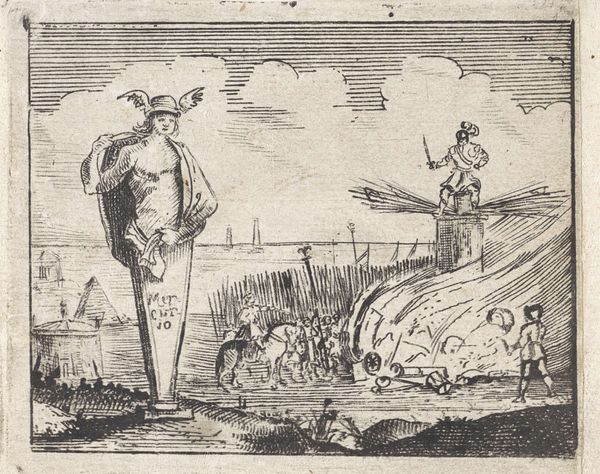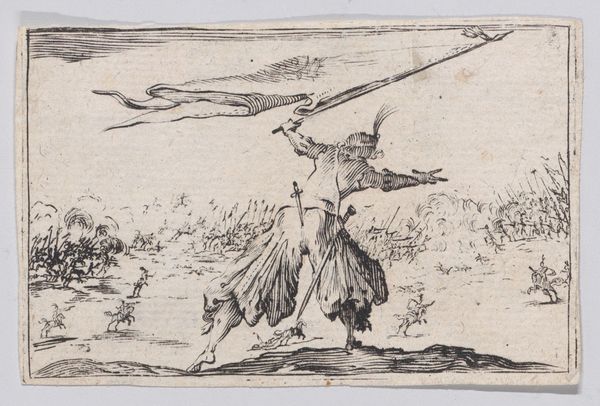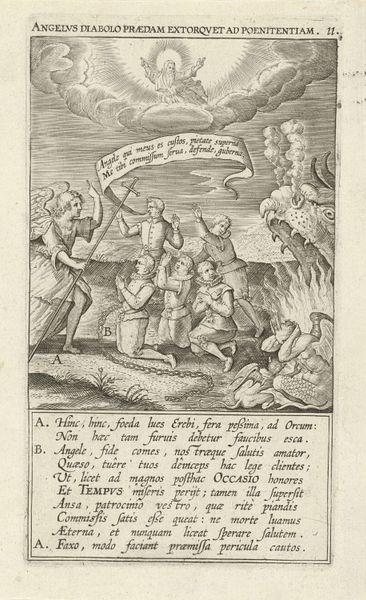
Sømand med en fane. Titelblad til "Søstykker og landskaber" 1650
0:00
0:00
drawing, print, etching, ink, pen
#
drawing
#
ink drawing
#
pen drawing
#
dutch-golden-age
# print
#
etching
#
landscape
#
ink
#
pen
Dimensions: 73 mm (height) x 125 mm (width) (bladmaal)
Curator: This intriguing etching from 1650 is by Reinier Nooms, sometimes called Zeeman. It functions as the title page for his collection "Seascapes and Landscapes," and it is called "Sømand med en fane. Titelblad til 'Søstykker og landskaber'". Editor: My first impression is one of contrasts. There’s a certain ruggedness in the depiction of the sailor struggling against the wind, yet also this elaborate banner displaying text, creating this tension between labor and pronouncement, doesn't it? Curator: Absolutely. Nooms, who himself was a sailor, often integrated text directly into his maritime scenes, quite innovative for the time. Notice how the banner’s inscription acts almost as a… proclamation. I see the banner, and its bold proclamation, as symbolizing the aspirations of maritime power during the Dutch Golden Age. The Dutch had really developed their mercantile marine at that time and so sought domination. Editor: And isn't that power complex reflected in the way the figure is literally holding up this…advertisement, a claim to capturing nature "apres le naturel?” There's something incredibly potent about using an image to sell images, like a self-referential gesture. This raises questions of truth and representation. What does it mean to capture nature? To reproduce nature for commerce, how does this redefine our relation with the world? And who owns this nature that can be reproduced? Curator: Interesting point. It's important to note how common symbolic banners are in visual culture throughout this period, operating as powerful symbols of civic and merchant power, frequently adorning important merchant buildings as reminders of economic strength. Nooms is not just documenting reality; he’s strategically deploying these well known symbols of merchantilism. Editor: Right. It strikes me how the man holding the banner is facing away from us; perhaps implying he is not only carrying, but leading the viewer away from something, beckoning. Also, his struggle gives the picture this sense of unease. And, by situating the man right beside two fellow men next to boats that await use, this accentuates the man’s struggle, in that we observe him as if he were behind. He seems to symbolize some forgotten member, struggling to do his role. He seems symbolic of so many people throughout history. Curator: Thank you! Your fresh, contemporary insights enrich the symbols in Nooms’s original seascape—that merchant banner is a reminder of global expansion at great cost to humanity and ecology, and to its unheralded laborers. Editor: And for me, seeing art placed back into conversations is really rewarding! It helps illuminate art's place and impact on a myriad of things like historical or political thought and experience.
Comments
No comments
Be the first to comment and join the conversation on the ultimate creative platform.
